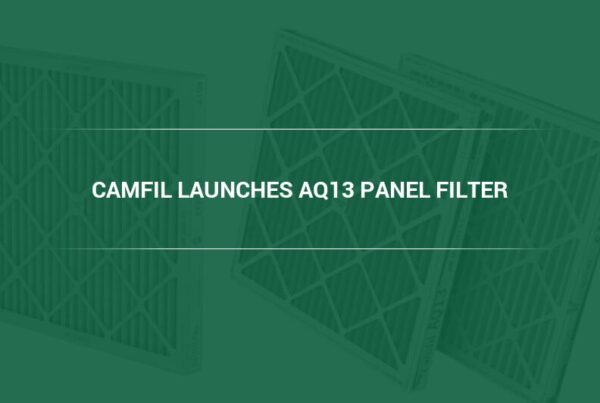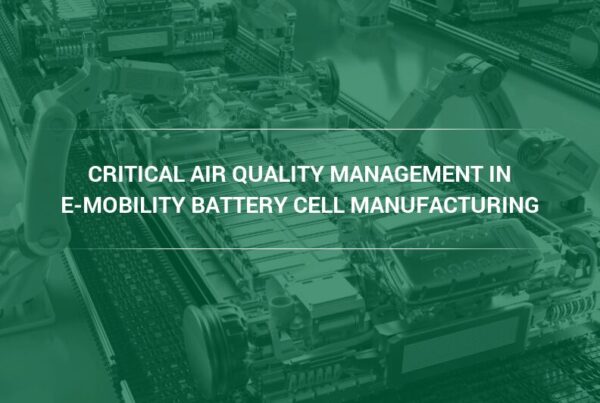Residents of the Salt Lake Valley in Utah have recently experienced an inversion, which is a meteorological condition where a cap of warm air keeps cold air trapped close to the ground.
This is fairly common during Utah winters, but this year, Utah’s air quality during the inversion has been ranked among the worst in the nation. Additionally, inversions and similar weather conditions are fairly likely to happen in any major valley, particularly those that experience snowstorms.
In this article, Camfil air filtration experts explain what causes an inversion and how to protect yourself against the accompanying poor air quality should you ever experience one.
What is an inversion?
An inversion is a meteorological phenomenon that involves the inversion of typical air patterns. Generally, it’s warmer near the ground and colder at higher altitudes. During an inversion, the opposite is true: warm air rises up into the atmosphere while cold air is trapped closer to the ground.
“A temperature inversion is a layer in the atmosphere in which air temperature increases with height. An inversion is present in the lower part of a cap. The cap is a layer of relatively warm air aloft (above the inversion). Air parcels rising into this layer become cooler than the surrounding environment, which inhibits their ability to ascend.”
— National Weather Service Glossary’s definition of inversion
Why do inversions happen?
Utah’s Department of Environmental Quality (DEQ) names several key reasons why inversions occur:
- Reduced mixing of cold and warm air due to calmer winds.
- Air close to the ground cools quicker due to clear winter skies.
- Longer nights mean that the ground has longer to cool, leading to a greater decrease in temperature in air near the surface.
- When the sun is lower on the horizon during the winter, it supplies less warmth to the earth’s surface, and more to the atmosphere.
The DEQ of Utah also notes that mountains can increase the intensity of inversions in valleys like the Salt Lake Valley. Furthermore, the aftermath of snowstorms can worsen inversions, because the presence of snow on the ground keeps it cold, while clear skies warm the upper atmosphere. As such, inversions tend to be self-perpetuating once formed, with warm air essentially creating a cap over cold air within the valley, causing the adverse weather and air quality conditions to last longer.
How do inversions affect air quality?
Because inversions interrupt natural air circulation patterns and keep air trapped close to the ground, pollutants are not able to disperse as readily. This lack of air circulation increases levels of smog, ozone, and other pollutants, making the air more difficult to breathe and leading to Utah’s recent air quality being deemed among the worst in the nation.
All kinds of pollutants, including particulate matter and harmful gaseous pollutants, are trapped close to the ground by inversions, leading to hazardous air quality conditions for residents in affected areas.
What can I do about it?
Although Utah’s DEQ recommends avoiding activities that add to air pollution, such as driving and burning wood, what can we do on a personal level to protect ourselves during inversions?
The most important thing one can do is stay informed. The DEQ issues hourly updates on local air quality conditions and alert levels. Air quality forecasts are also issued for the following day.
What are you supposed to do during an inversion? Experts provide tips for staying safe
- Stay informed. Make sure to keep up with the DEQ’s hourly updates on local air quality conditions and alert levels in affected areas of Utah. Air quality forecasts are also issued for the following day.
- Stay indoors as much as possible, and be sure to keep windows closed (which shouldn’t be difficult in the current weather conditions). Exercise caution when using your central HVAC system; the filters that come with it are designed to protect the equipment and are not sufficient to protect you from outdoor pollutants coming in through the air circulation system.
- Avoid activities that release pollutants into the air such as driving and burning wood. Remember, during the conditions created by an inversion, pollution will stay trapped close to ground-level, making it all the more important to avoid high-pollution activities.
- Use a premium air purifier with both HEPA and molecular filtration capabilities. Watch out for the numerous products on the market that claim to use HEPA filtration without the factory testing paperwork to back it up. Additionally, even the highest quality HEPA filters are only able to remove particulate pollution from the air. To target hazardous gaseous pollutants -such as ozone; nitrogen, sulfur, and carbon oxides; and volatile organic compounds (VOCs) – choose a unit that also uses molecular filtration, such as an activated carbon filter.
About Camfil Clean Air Solutions
For more than half a century, Camfil has been helping people breathe cleaner air. As a leading manufacturer of premium clean air solutions, we provide commercial and industrial systems for air filtration and air pollution control that improve worker and equipment productivity, minimize energy use, and benefit human health and the environment. We firmly believe that the best solutions for our customers are the best solutions for our planet, too. That’s why every step of the way – from design to delivery and across the product life cycle – we consider the impact of what we do on people and on the world around us. Through a fresh approach to problem-solving, innovative design, precise process control, and a strong customer focus we aim to conserve more, use less and find better ways – so we can all breathe easier.
The Camfil Group is headquartered in Stockholm, Sweden, and has 31 manufacturing sites, six R&D centers, local sales offices in 35+ countries, and about 5,200 employees and growing. We proudly serve and support customers in a wide variety of industries and in communities across the world. To discover how Camfil USA can help you to protect people, processes and the environment, visit us at www.camfil.us/
##
Media Contact:
Lynne Laake
Camfil USA Air Filters
T: 888.599.6620
E: Lynne.Laake@camfil.com
F: Friend Camfil USA on Facebook
T: Follow Camfil USA on Twitter
Y: Watch Camfil Videos on YouTube
L: Follow our LinkedIn Page



